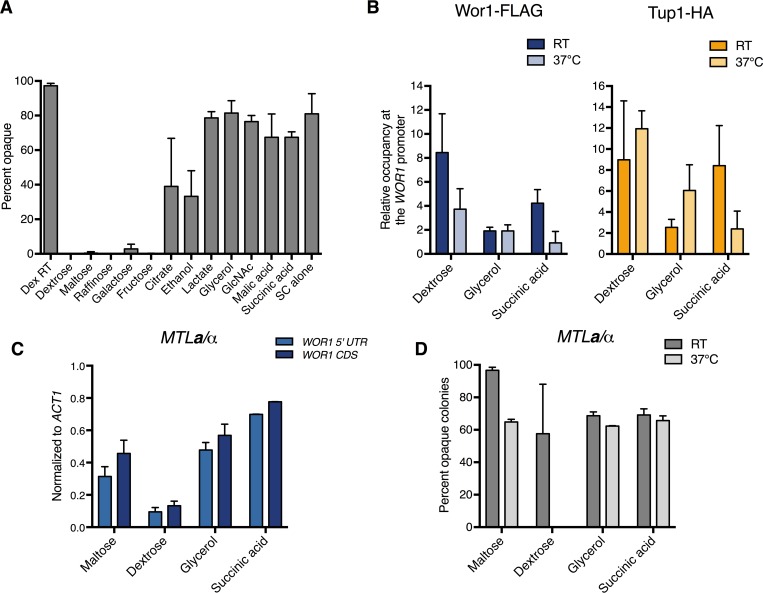Fig 6. Non-glycolytic carbon sources alter Tup1 occupancy at the WOR1 promoter and stabilize the opaque phase at 37°C in MTLa/a and a/α cells.
(A) Opaque stability of MTLa/a cells cultured in various carbon sources at 37°C for 24hr. Overnight cultures of MTLa/a WT opaque cells (HLY3555) grown in SCD were washed three times with H2O and inoculated into fresh SC medium containing the indicated carbon sources. Cultures were grown at room temperature for 3hr then transferred to 37°C for 24hr. Samples were plated onto SCD plates and grown for 5–7 days to assess phase switching. (B) ChIP of Wor1 and Tup1 in opaque cells at room temperature and 37°C in different carbon sources. Opaque cells carrying both Wor1-FLAG and Tup1-HA (HLY4541) and an untagged strain (JYC1) were grown in SC medium containing the indicated carbon source overnight at room temperature. Cultures were diluted and grown to log phase, then grown at either room temperature or 37°C for 1hr for ChIP. Enrichment is presented as a ratio of the -4kb region of the WOR1 promoter IP (bound/input) over an ADE2 control region IP (bound/input) of the tagged strain, further normalized to the control strain. Values are the average of three independent ChIP experiments with error bars representing the s.d. (C) Opaque stability of MTLa/α cells cultured in liquid media at 37°C for 24hr. Overnight cultures of opaque MTLa/α cells carrying pMAL2-WOR1 (HLY4543) from SCM were washed three times with H2O and inoculated into YNB medium containing the indicated carbon sources. Cultures were grown for 3hr at room temperature then shifted to 37°C. Cells were collected after 24hr and gene expression levels were analyzed by qPCR and normalized to ACT1. Average expression level of three independent qPCR experiments are plotted with error bars representing the s.d. (D) Opaque stability of MTLa/α cells on solid media. Overnight cultures of opaque MTLa/α cells carrying pMAL2-WOR1 (HLY4543) grown in SCM were washed three times with H2O then plated onto YNB plates containing 2% of the indicated carbon source. Plates were incubated at room temperature or 37°C for 5–7 days and scored for percent opaque. Both whole and sectored opaque colonies were counted as opaque.

